The Mike Toole Show
The Other 100 Best Anime Movies of All Time, Part 2
by Mike Toole,
UPDATE: Alright, since this is broken into four parts, I'll lead off by re-iterating: this project is an "answer" of sorts to a generally terrific list of 100 essential anime films by Paste Magazine. You can read my reasoning for compiling this selection in Part 1 of this particular list.
I got some pretty fascinating feedback from the first installment of this list. Not only were there interesting takes on some of the titles (quite a few people rate the Asura and Armitage III films higher than me, which I find interesting), others chimed in with suggestions of their own. A few brought up Dragon Ball Z movies, which raises a tough question for a list like this one: what to do with Shonen Jump movies?

When I say “Shonen Jump” movies, I generally mean movies based on long-running manga that are carefully designed to avoid impacting the main storyline, and that also introduce movie-only “bonus” characters. It's the first part that's the sticking point – even exciting stand-alone films based on fare like Naruto and One Piece just feel low-stakes, because you know that the outcome isn't going to have any long-lasting effects on the greater storyline. There's a lack of impact that kinda blunts these films' effectiveness. The One Piece films Gold, Strong World, and Film Z are good examples. These are really entertaining movies for both One Piece lifers and new fans alike, but narratively, they really obviously tread water. A rare few “Shonen Jump” movies manage to do more than just run in place, and you'll see some of them on this list. Let the countdown continue!
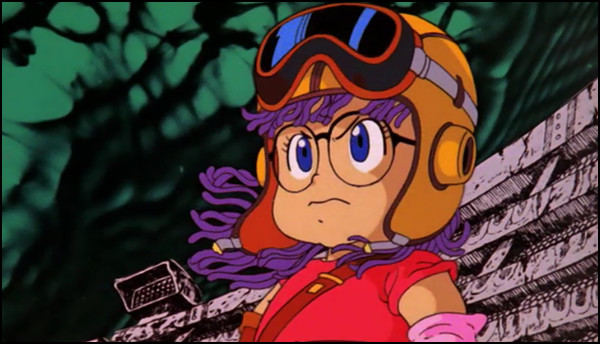
75. Dr. Slump: Hoyoyo! Space Adventure
On one level, this particular Dr. Slump movie is an artfully silly poke at the sci-fi boom of the late 70s and early 80s, skewering everything from Close Encounters of the Third Kind to THX-1138. On another level, it's ninety minutes of poop jokes, booger jokes, Ultraman references, dumb comedy routines, and weirdly evocative, exciting space battles. This film is a spinoff of a TV series based on a manga series by the famous Akira Toriyama—a manga that just might be the most consistently entertaining comics work of all time, or at least the funniest. In this particular excuse for the bumbling Dr. Senbei “Slump” Norimaki to let his robot ward Arale run amuck, the doc's objet d'affection, schoolteacher Midori, is whisked away to her home planet. Rather than being an excuse to write her out of the series, the entire rest of the Slump gang bolt together a creaky Space Battleship Yamato lookalike and take off in pursuit. Only, you know, they keep having to land and park their crude space cruiser, because Slump forgot to install a toilet on it and the crew require frequent pee breaks. What Midori finds is a planet overtaken by a megalomaniac, a self-obsessed, preening jackass who dispatches his stereotypical henchmen to get stomped into space dust by the cheerfully violent Arale. Some of the other Dr. Slump films are zippier, but they tend to clock in at 30 minutes or so – this one is a nice, filling, ninety-minute ride, a SF comedy that will alternately impress you with its visuals and make you laugh out loud at its incompetent Superman parody.
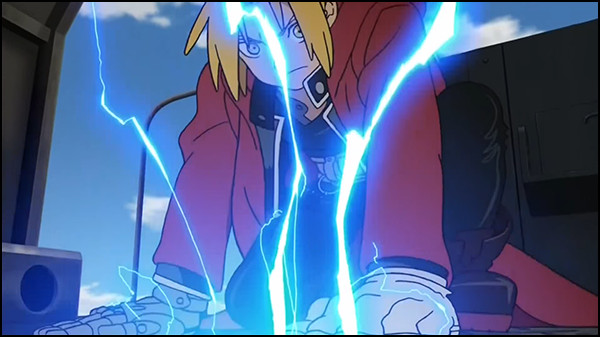
74. Fullmetal Alchemist: The Sacred Star of Milos
I'm one of those people who saw both Fullmetal Alchemist TV shows as they broke big, and still preferred the surging action of Brotherhood to the more thoughtful, intense original. The gap between movies is way bigger, though; the first series' Conqueror of Shamballa film is nothing short of shambolic, a flashy and intense ride but a sad little fart of a finale to a generally excellent TV series. The Sacred Star of Milos is ostensibly part of the Brotherhood family, having been made shortly after the TV series wrapped, but it kinda feels like its own deal, in a good way. This Is thanks to director Kazuya Murata, an action-junkie animator who gives the franchise stars' alchemy a kind of primal, crazed vigor that looks like nothing else in the FMA lore. His visual stylings elevate what's otherwise a rote Shonen Jump-style movie, complete with special movie-only villain, movie-only girl, and a self-contained story that (yet again) evokes Israel-Palestine comparisons. I still gotta hand it to Maaya Sakamoto, who plays the special movie-only girl Juliet, plus the same role in at least five or six other movie spinoffs. If she keeps taking roles like this, she'll end up being typecast!
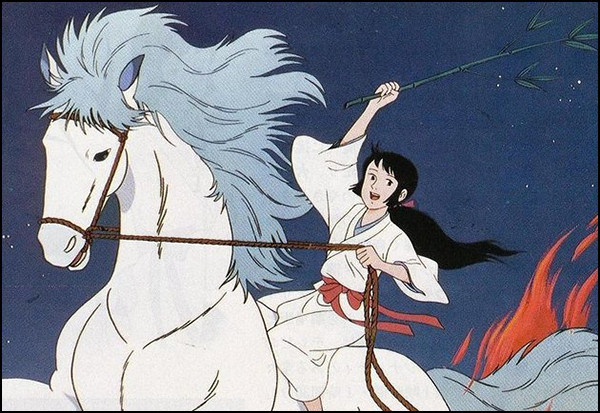
73. Yuki
Most anime filmmakers aren't particularly forthcoming about their politics, even though, for example, it's pretty apparent from his oeuvre that Hayao Miyazaki's something of a leftist. Here's a movie made by an actual Communist, a registered member of Japan's Communist Party who suffered periodic blacklisting as a result. But Tadashi Imai didn't let his exile deter him from creating some of the sharpest films of the 50s and 60s, critically-acclaimed, far-reaching fare like Muddy Water and Bushido. Yuki is Imai's only animated film, one of those rare situations where a filmmaker known chiefly for live-action dips their toes into animation. To make it, he drew from a 1969 story by Ryūsuke Saitō, with animation talent largely coming from Toei. The film's title character, a charming and charismatic snow fairy disguised as a human, defends a remote village from both government forces and demons, with the help of her prized horse, Fubuki. Imai's sole animated film is patient and graceful, if a bit workmanlike. It's also damn hard to find these days—it was released by Nikkatsu Children's Films, and only barely even made it out on VHS! Grit your teeth and get through it if you happen to find the Spanish-dubbed or Czech-subtitled version; it's worth your time.
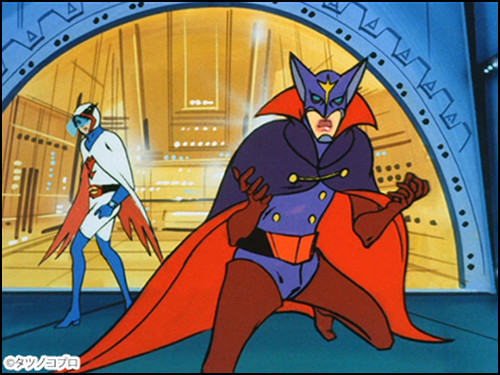
There aren't many TV-series compilation films worthy of this list, but this is perhaps the most worthy. The original Gatchaman TV series was a global phenomenon, a story that introduced kids around the world to color-coordinated bird costumes, cool vehicles, and freaky bad guys trying to take over the world in the name of a malevolent alien consciousness. By the time this movie was bolted together, the hype had cooled down, so the idea was to remind kids of the original just in time for the weird sequel TV series to start up. What we got was an unbelievably apt, appropriate condensation of 100+ episodes into a single explosive feature film. This film has all of the best stuff—crazy bad guys like the Turtle King, Condor Joe's sadly heroic decline, and the final battle with Berg Katse and Galactor. There's not much new material here, but what's present is good enough, especially the redone orchestral soundtrack. I was elated when I learned that Sentai Filmworks had dubbed it for Blu-Ray. If you just can't make time for the boffo but extremely lengthy TV series, you could do a lot worse than kill an afternoon with this movie.
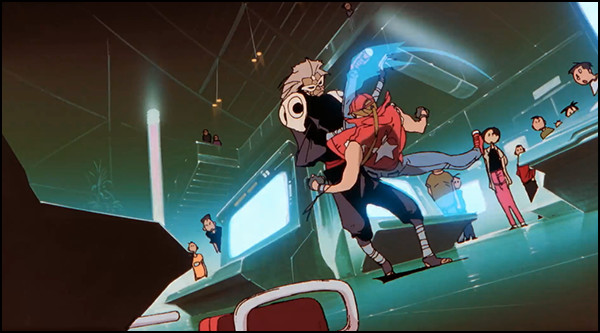
71. Fatal Fury: The Motion Picture
Anime OVAs and films based on fighting video games have a really checkered reputation. This is because they're based on media with no real story, often rushed into production to get the final product published while people are still playing the game. There are a lot of duds – the likes of Art of Fighting and the Tekken OVAs – but there are also gems, like this one. The whole fighting game-to-anime trend started with Fatal Fury, which beat most competitors to the punch via a TV special in 1992. A second special followed, and then a full-length theatrical film, courtesy of action animator Masami Ōbari. Despite being based on a punchy-vs-kicky video game with minimal story, Fatal Fury: The Motion Picture is a true auteur's film—Obari designed the characters, drew the storyboards, worked as animation director, and directed the entire project as a whole. Here, his fine sense of speed and impact compensates for his increasingly weird, pointy sense of character design, as he utilizes Takashi Yamada's script to loosely chain together a series of explosively exciting fight scenes. The filmmakers wisely relegate most of the game's large cast of fighters to walk-on cameos, in order to focus on the story of fighting brothers Terry and Andy Bogard, their buddies Joe Higashi and Mai Shiranui, and their quest to keep a mysterious villain from acquiring and using the ancient armor of the gods. Fatal Fury: The Motion Picture is a rare film that manages to dish out satisfying nods to the arcade game source material and lay out an exciting new story in equal measure.
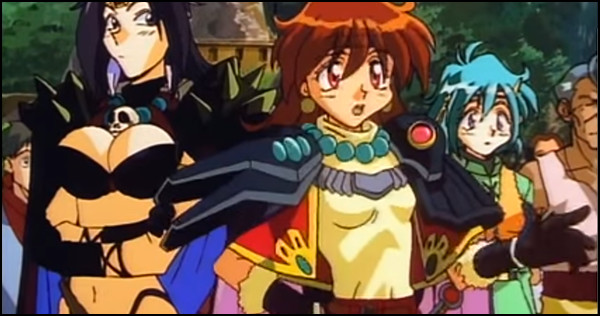
70. Slayers Return
There's an untidy, unruly pile of Slayers movies, and this one is the most well-paced, good-looking, and most importantly, the funniest. By the time this movie was made in 1996, the exploits of the sorceress Lina Inverse and her companions were well-known to TV viewers and readers of Dragon Magazine. The formula is simple: Lina is a potent spellcaster, but a greedy, violent, egotistical jackass. Here, she's joined by frenemy Naga the Serpent in her quest for treasure, a quest that brings her to a sleepy village rumored to conceal a massive lode of orichalcum. After a series of misadventures with local idiots, Lina and Naga manage to awaken a golem, a charging golden monstrosity that occasionally pauses to remark “roar.” This is solid, hilarious work by director Kunihiko Yuyama, the Pokémon guy himself. It's a movie with a fine sense of the absurd, and probably the best way to dip your toe into the larger world of Slayers.
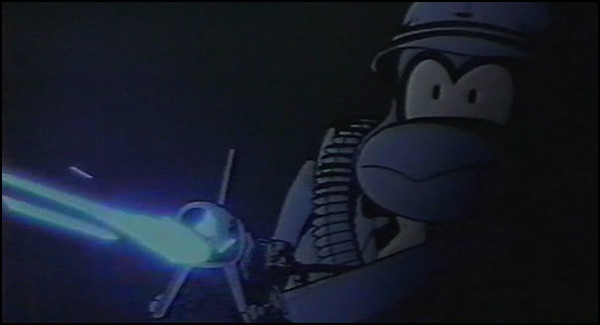
69. Penguin's Memory: Shiawase Monogatari
In 1984, SUNTORY started rolling out a series of amusing TV commercials to help sell their beer to the public. The commercials were fanciful little vignettes depicting a pair of cartoon penguins out on a date. The campaign was a hit, so the following year, the liquor and beverage company produced a thinly-veiled version of The Deer Hunter, only starring those same adorable puffy penguins. This means that we see funny little penguins traumatized in Vietnam, funny little penguins returning home with terrible PTSD, and funny little penguins struggling to re-integrate with society and reconnect with old friends. You sometimes see Penguin Memories tossed onto lists of bad anime, because the way its premise clashes with its visuals is just that shocking. The movie is unmistakably, disconcertingly weird, but it's not actually bad at all. It's technically sound, with a good story and sympathetic characters. They just happen to be wacky-looking little cartoon penguins. Penguin Memories might not be a movie worth seeing for strictly the best reasons, but it's worth seeing nonetheless, an absolutely unmissable movie.
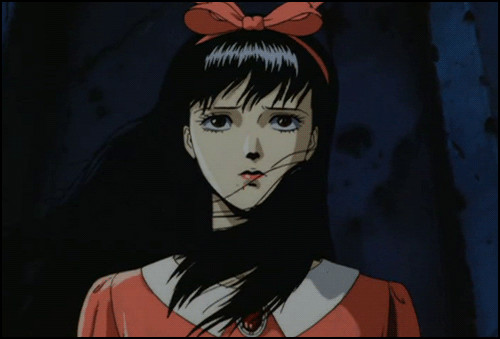
This movie looks and feels so much like Yoshiaki Kawajiri's Wicked City that it's pretty common for people to assume that it's some sort of sequel. It's not, it just happens to be from the same director, the same writer, and has sort of a similar story, setting, and title. Go figure! This time, the mysterious son of a deceased demon fighter is enlisted by the president of the whole world to infiltrate the ruins of Shinjuku; the bustling business district had been smashed up by Revi Ra, a spiritual warrior who'd allowed demons to possess him in order to gain more power. The young man, Kyoya, takes to the task, moving through a burned-out, blue-tinted Shinjuku in order to fulfill his mission and confront the man who killed his dad, even though wandering into a ruined city to rescue the president's daughter is totally shades of Escape from New York. Demon City Shinjuku is weaker on story than exemplary Wicked City, but there's still plenty of action to go around.
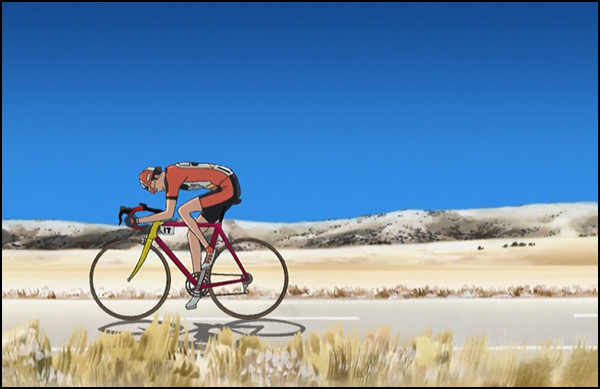
When Kitarō Kōsaka went to Madhouse to direct this movie, there was a lot of talk that he might be leaving Studio Ghibli for good. That would've been calamitous – the animator and character designer had been responsible for much of Spirited Away's visuals, and he was one of the gang whose name was always in the mix when people talked about who might replace Miyazaki and Takahata as the studio's house directors. He didn't get a clear shot at directing with Ghibli, so what he did was, he went to Madhouse, and adapted a manga series that his buddy Miyazaki had recommended to him. In the process, he created a pretty awesome sports movie, a technically accomplished look at bicycle racing that examines not just the will of a single rider to win, but the complicated dynamics of a cycling team in a prestigious multi-day race. The single rider, Pepe Benengeli, is actually a domestique, a rider meant to support and protect his team's lead racer and help them get the win. With his personal life in a shambles and his professional future as a cyclist teetering, he makes a bid to win the race himself. This is a beautiful, exciting, and compact movie, one that I keep hoping will show up somewhere in the west. I don't get it, man, it got dubbed for TV in Asia and has Ghibli people involved, what's the problem? Kosaka, for his part, eventually returned to the Ghibli fold – but not before taking another break to do a fine OVA sequel to this movie. If you like sports movies and/or love cycling, this is essential viewing.
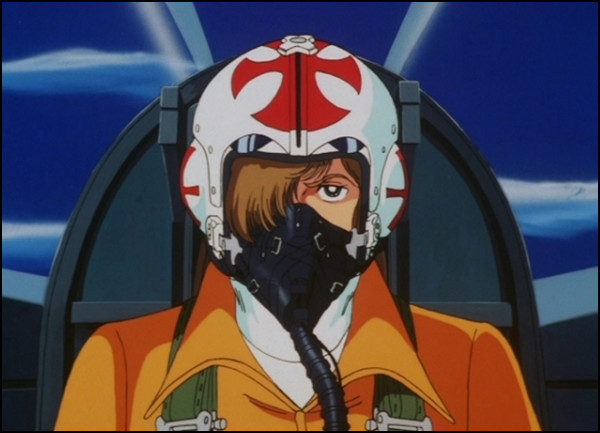
66. Area 88
Area 88 isn't so much a movie, but three OVAs that each ran in theatres. To complicate things further, the first two episodes were later compiled into one long episode, which was also screened in theatres. Like I said last time, I do count OVAs that run in theatres like movies, and Area 88 rates inclusion here. It's a terrific, action-packed adaptation of Kaoru Shintani's manga, a tale of far-flung desert mercenaries that marries melodrama and romantic rivalry with death-defying aerial combat. Protagonist Shin Kazama is incredibly damaged goods, a would-be airline pilot tricked into enlisting with a crew of mercenary pilots by his romantic and business rival—mercs led by Saki Vashtal, crown prince of the kingdom of Asran, so this is a thinly-veiled depiction of mercenary combat in Iran and Iraq in the wake of the former's revolution in 1979. Shin is horrified by being forced to shoot down other pilots, but he's so good at the job, he starts to get comfortable in spite of himself. He's surrounded by a motley crew of other pilots, and halfway across the globe, his fiancée Ryoko has firmly not given up on him. Area 88 is marries technically excellent battlefield animation—some of the best of the 80s, I think—with a real sense of danger, paranoia, and abject hopelessness. As invincible as Shin seems in the cockpit, he's very fragile, a lonely and compelling hero.
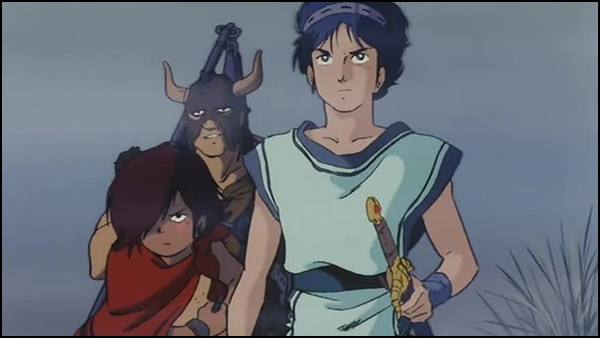
65. Arion
Arion has traveled a long way on the sheer strength of its visuals. Still a cult classic amongst 80s animation fans, this auteur project by Yoshikazu Yasuhiko comes off like a weirder, more violent version of Greek mythology, kind of like what would've happened if Ares was kidnapped by Hades and turned against Zeus. From a storytelling standpoint I'm almost tempted to compare it to the God of War video games for that reason, as it depicts a fierce hero who takes up the sword against the haughty gods of Olympus—and wins. It's also nothing short of a visual master class, the kind of movie you can watch over and over and still catch new details. This is a passion project, based directly on YAS's own manga, so it's dismaying to read interviews where the director reveals that he hates the film (he's said he directed this movie while “in a half-dead state,” which is honestly distressingly common for the era; Gundam creator Yoshiyuki Tomino has said similar things about how he felt while directing Zeta Gundam). The sheer strain of making the movie made him hate the animation business so much he stayed away for decades (he only had a couple of projects in the 90s and 00s). If it's any consolation, I feel like YAS's dedication to visual craftsmanship really paid off, not just with Arion, but with his other films and TV projects. This movie is a rugged and exciting adventure, and I hope that its director forgives it someday.
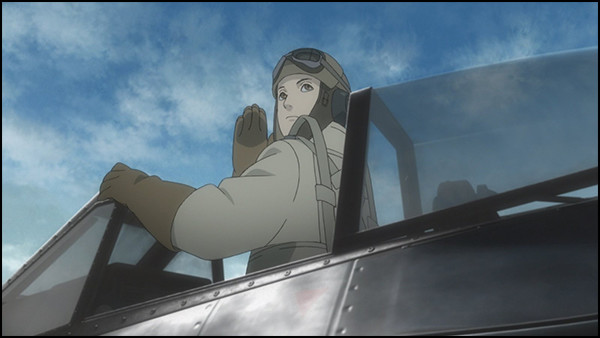
64. The Sky Crawlers
Mamoru Oshii's The Sky Crawlers posits a future where warfare is finally obsolete, but it still somehow exists, treated mainly as a sport thanks to the existence of Kildren, genetically engineered operators vat-grown to never get past the vitality of adolescence, and trained to wield military weapons. One such Kildren is Kannami, a veteran pilot who's just transferred to Airbase 262. What he finds is a whole collection of psychologically bruised Kildren and their commanding officers, people who give him a wide berth because he's the replacement pilot for an ace, Jinro, who met an ugly end. As he settles into an endless cycle of dogfights against rival pilots from the Rostock Corporation, Kannami starts to question the nature of his existence, and especially the fuzziness of his memories. This movie doesn't have the cutting edge of Oshii's other great movies, but it still has some intense dogfighting action, a good study of the brutal indifference of war, and some seriously subversive storytelling points that seem to critique the callow, perpetually-adolescent lifestyles of otaku and fujoshi. The Sky Crawlers is a gorgeous, meditative movie, proof that you can't really discount a single one of Mamoru Oshii's animated films.
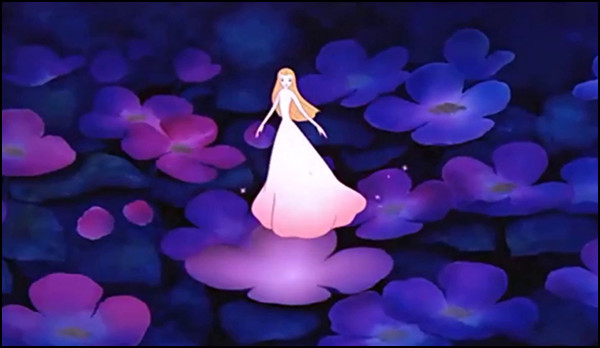
63. A Journey Through Fairyland
There are precious few animators that the great producer Masao Maruyama refers to as “sensei.” Masami Hata is one of them. Anime has a tradition of cutting corners, animating on every second or third frame. This approach saved money when Osamu Tezuka used it for Astro-Boy, but it also helped create a distinctive look and style. Unlike his peers, Hata spent much of his career veering away from that style, instead creating vivid, beautiful “full” animation, 24 drawings for every second. Consequently most of his movies look great; A Journey Through Fairyland is just one of several masterpieces he created while at Sanrio. The film has the simplest of stories – a talented young musician slacks off, contented to tend to his garden at home. One night he's whisked away by the fairy princess Florence to the kingdom of flowers, and it's there that he must face his conflicting passions. A Journey Through Fairyland is packed with visual and auditory splendor—it feels more than a little like a massive Fantasia sequence, since it employs real, orchestral classical music and has pretty rudimentary plotting. This is a rare piece of work that is both a family film and an art movie.
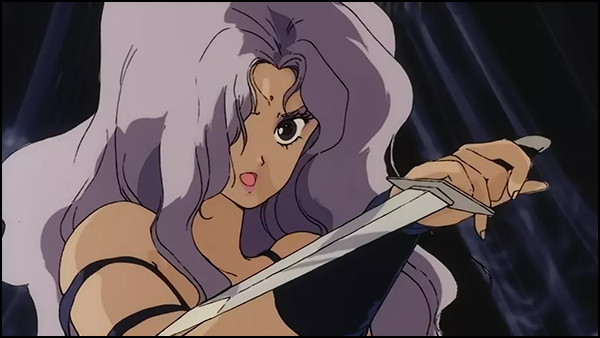
62. Windaria
Izu and his wife Marin lead a simple, happy life in their village, but a conflict between the kingdoms of Paro and Itha threatens to plunge their lives into chaos. What begins as a seemingly ordinary fantasy story is given weight and color by director Kunihiko Yuyama (him again!) and the delicate artwork of Mutsumi Inomata, the “Tales of…” game artist who handles character design and animation direction in this film. The end result is an engrossing and compelling tragedy; we see Izu and Marin promise to stay by each other's side, but the protagonist's blind ambition and greed in the face of the city-states' conflict gradually destroys both kingdoms and strips him of everything he's ever loved. Windaria's a perfect little gut-punch of a movie; Inomata's similar work on Leda and Utsunomiko is fun, but this movie has so much more to offer.
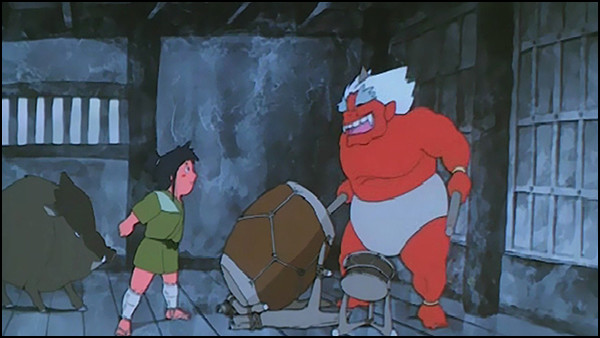
They never let the great animator Reiko Okuyama direct, but with this film, she came pretty close. Granted, this movie is also very much the baby of Kirio Urayama, the director and screenwriter, but it's safe to say that it wouldn't have turned out as well as it did without Okuyama's heavy lifting; it was she who created the look of the film, a beautiful and painterly fantasy. Taro the Dragon Boy is a fun and energetic myth, one anchored by a rough, pugnacious title character who sets off to help others and do battle with oni, in search of his lost mother. Much like Journey to the West, this is a story where a powerful but brash hero must learn that his goals are best achieved while in service to others. Taro often gets lost in the shuffle when compared to similar Toei films like Little Prince and the Eight-Headed Dragon and Magic Boy (though considerably older movies, Okuyama worked on them, too!), but it's a solid piece of work that deserves to be remembered alongside them.
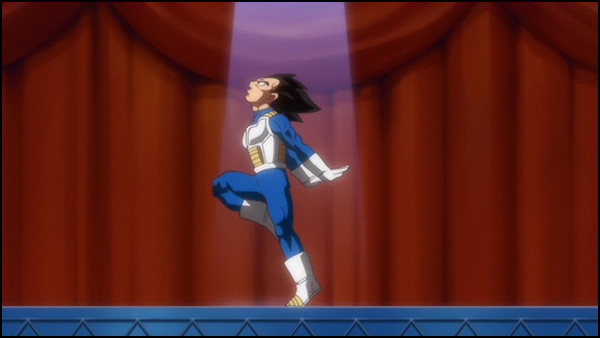
60. Dragon Ball Z: Battle of Gods
Something odd happened over the course of Akira Toriyama's popular Dragon Ball manga. The artist gradually put aside the weird, anything-can-happen feel of the earliest stories, all in favor of a series of escalating fights between the powerful warrior savant Goku and his similarly grunting, muscly pals. Alright, this wasn't that odd—Toriyama was merely taking feedback from fans and editors, as both parties were hungry for cosmic-scale battles and sprawling storylines. In movie form, Dragon Ball Z tends to involve two things. One of them is a special movie-only character, an adversary with a name like Broly or Garlic Jr. The other is Goku and one or more of his buddies screaming and powering up. But Battle of Gods is the return of the Dragon Ball franchise after something like 20 years; it would need something more than the usual fight scenes.. The only thing for the filmmakers to do was to come up with a bad guy more powerful than ever. And so Toriyama himself gave us Beerus, a feline-looking cosmic being who's powerful beyond all reasonable measure, but is also easily distracted by compliments and good food and drink. Goku and Vegeta want to do battle with this interloper, but also have to contend with a family birthday party, with genuinely hilarious results. It turns out that Dragon Ball Z's final and most powerful form isn't that of a spiky-haired, overmuscled tournament battle, but instead that of a zany family comedy.
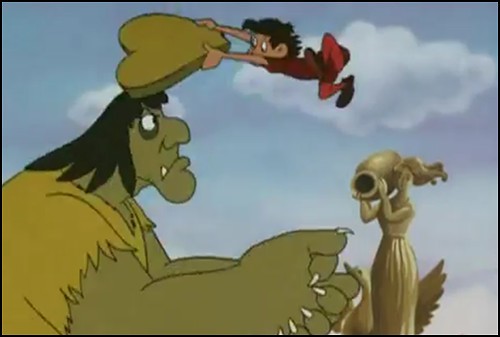
Here's an honest-to-goodness movie musical, which is a rare feat in the world of Japanese animation. Oh sure, plenty of movies have musical numbers. Some of them even have several. But the first one to actually have the musical performances be the spine of the film is Gisaburō Sugii and Group TAC's Jack and the Beanstalk, a nutty, extremely loose adaptation of the classic fairy tale. Essentially, this film hands over a number of weird, original additions to the fairytale—additions that include a pretty princess, a vengeful queen (and mother to the giant!), and most entertainingly, an oddly personable cartoon dog, a companion for Jack called Crosby. What prevents this movie from being standard fairy-tale fare is both this set of fun extra stuff, and Sugii's surprising visual inventiveness. His movies always look good, but are rarely this… well, cartoony. Jack and the Beanstalk was a solid enough film that it was deemed worthy of a U.S. theatrical release in 1976, which means it's gotta be at least as good as Rudolph's Shiny New Year. And from a musical angle, even the dog gets his own song, and it's a sad lament to boot! Jack the Beanstalk sets a singularly weird, impressive standard, and I'm not sure it's ever been really matched.
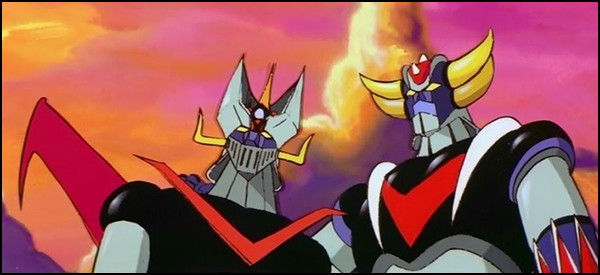
58. UFO Robo Grandizer Vs. Great Mazinger
There are about a half-dozen Toei super robot movies like this one. They all involve one robot teaming up with another robot (or perhaps multiple robots), and are pretty much interchangeable. In this one, Tetsuya Tsurugi and Duke Freed first butt heads, then use their powerful Great Mazinger and Grendizer robots to team up and fight the true enemy: the Vega Empire, which are sometimes called “Vegans,” which makes me giggle and contemplate a protracted super-robot war with a race of aliens who don't use animal products. Movies like this were conceived as anchors for Toei's Manga Matsuri, festival-style cartoon movie screenings designed to lure kids into matinee theatres in the summers. Fare like this movie and, say, Mazinger Z Vs. Devilman aren't much different, qualitatively, from the rest. But this one was the most breezy and fun. My favorite part: the old Mazinger Z pilot Koji, who's now second banana to Duke Freed, has to bite his tongue to avoid talking about the fact that he used to be a Mazinger pilot too, dangit!
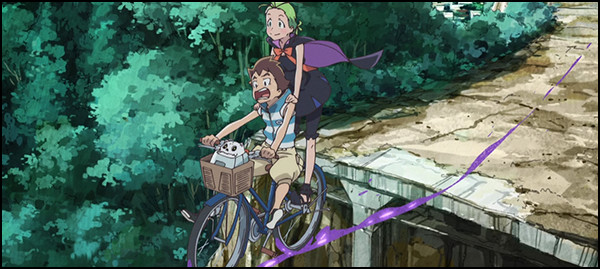
57. Magical Sisters Yoyo & Nene
ufotable deserve a spot at the table of great anime films, and I haven't been able to get my damn hands on a legal copy of The Garden of Sinners, so I guess this one is it. Unlike that fancy-shmancy Garden of Sinners set, I was actually able to find a copy of this movie while out shopping in Tokyo, a movie I'd been curious to see since it rolled out at a bunch of film festivals around the world a couple of years back to generally good notices. I left Magical Sisters seriously impressed with both its visual quality and the depth of its story. As a product, it's a little bit like Catnapped!, a weird family fantasy adventure that doesn't neatly fit into its adjacent genres. Aesthetically, it has an awful lot in common with stuff like Little Witch Academia and Tweeny Witches, with colorful, energetic girls using magic to achieve their goals. These particular girls, Yoyo and Nene, are the best cursebreakers in the magical kingdom; if there's out-of-control magic or a hex wreaking havoc, they're the ones who'll track it down and snuff it out—in one memorable case, by dropping an elephant on it! The twist in the tale is that Yoyo, the littler (but not younger) sister, becomes trapped in the real world, and is obliged to help a human family when their parents fall under a curse. At the center of the mystery is a tragedy, and a misguided attempt by a normal person to use technology to share magic with people who aren't ready to use it. Magical Sisters is a lush and lovely fantasy. Its scope and ambition brings to mind Welcome to THE SPACE SHOW, but this is a much better film, one that stays strong throughout and knows when to finish the story. I have to admit that Magical Sisters is also a teeny bit maudlin and by-the-numbers, but it's still an exceptional film, one of the best-looking movies on this entire list. At the time of this writing, it is streaming in the premium section of Daisuki.net, but it's well overdue for wider release in the west.
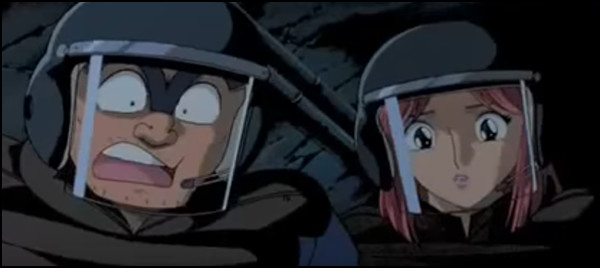
Kochira Katsushika-ku Kameari Kōen-mae Hashutsujo is one of Japan's great situation comedies. It's about a police constable named Ryotsu Kankichi, a gregarious, loudmouthed palooka with a beetling unibrow who stomps around in geta sandals and huffs up and down the streets of Katsushika Ward on a 3-speed bicycle. He frequently gets into trouble with his superiors by launching weird side hustles, but his general daftness conceals the fact that Ryotsu actually has excellent police instincts, and frequently succeeds in foiling plots and nabbing bad guys. This all comes to head with the surprise arrival of FBI bomb expert Lisa Hoshino, who's in Tokyo to investigate a series of mysterious terrorist attacks. And thus, we have a movie that puts Ryotsu, an extremely entertaining idiot, into the lead role of a bigtime action flick. This is Kochikame at its best, a zippy combination of daffy comedy, light social commentary, and solid action set pieces. Kochikame: The Movie also boasts one of the funniest false endings I've ever seen, a raucous climax that involves raising an old, disused drawbridge over the Sumida River to divert a runaway missile. Ryotsu himself is just hilarious, a perfectly, enjoyably dumb working stiff. The TV series that gave rise to Kochikame: The Movie isn't too shabby, but this particular movie is probably the best way to experience Kochikame in anime form for anyone new to the series, especially since the old R2 DVD has English subtitles.
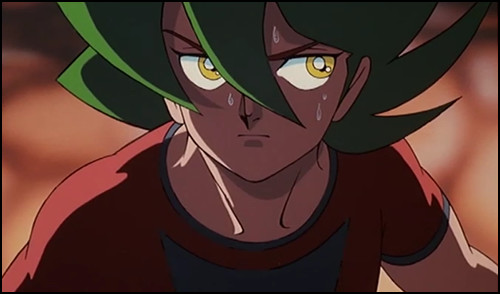
Locke the Superman has ESP, is a powerful warrior of indeterminate age, and probably hails from planet Lonwall. All of this is known to Ryu Yamaki, an officer with the Earth Forces. What he doesn't know is whether the emerald-haired boy he's got for interrogation is really Locke himself. Yamaki is investigating a mysterious conspiracy by a secret cabal of psychics bent on asserting dominion over galactic civilization., and he openly admits that the Earth Forces are outgunned and need Locke's help. Locke is reticent, but leaps into action when he realizes that the threat is real and his new pal in the Earth Forces is a target for assassination. He wins the trust of Yamaki by saving him, and starts unraveling the conspiracy of Lady Khan, an ancient and powerful ESPer with a millennium-long plan. Khan's grooming her own psychic super-soldier to counteract Locke—one with a personal connection to Yamaki! Locke's long been a popular character in Japanese SF – he's an intriguing cipher who's afraid to connect to others, even when he meets a similarly studious, considerate psychic named Cornelia. This film is a good presentation of one of Yuki Hijiri's central Locke the Superman stories, one that preserves the manga artist's breathtaking sense of scale while still keeping the focus on Locke and his immediate allies and adversaries. It's also run through with jaw-dropping trick photography and great psychic fight scenes. I really dig stories like this, ones about unfathomable heroes whose powers aren't easily understood by either the characters in the film or viewers in the theater seats.
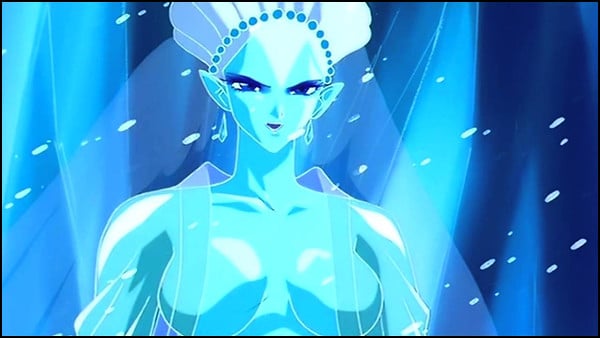
54. Sailor Moon S Movie: Hearts in Ice
A list like this kinda needs a good exemplar from Sailor Moon, so here's one of the very best bit of Sailor Moon. The Sailor Moon S movie has the look and feel of Toei's Sailor Moon, with clean and stylized character animation and elaborate henshin sequences; stewards Junichi Satō and Kunihiko Ikuhara were still in the mix, but stepped away from their supervisory roles here. Their influence is still present and unmistakable. At the same time, it's a movie that is much closer to the kind of Sailor Moon story that original manga artist Naoko Takeuchi would have made, because that's what it is. It's directly based on a manga side story by Takeuchi. That side story is itself a loosey-goosey adaptation of Hans Christian Andersen's Snow Queen, only in this case the Queen is depicted as the menacing alien Princess Snow Kaguya, the young Kai is an astronomer named Kakeru, and his would-be girlfriend Gerda is an astronaut named Himeko. This unlikely adaptation is beefed up by an utterly silly romance subplot between Kakeru and Luna (yes, the cat) and an absolutely boffo series of fight scenes, especially the bit where Tuxedo Mask flies to the rescue—disguised as Santa Claus. This movie was created during the apex of Sailor Moon's popularity, and it shows—it's vigorous, distinctive, and a lot of fun.
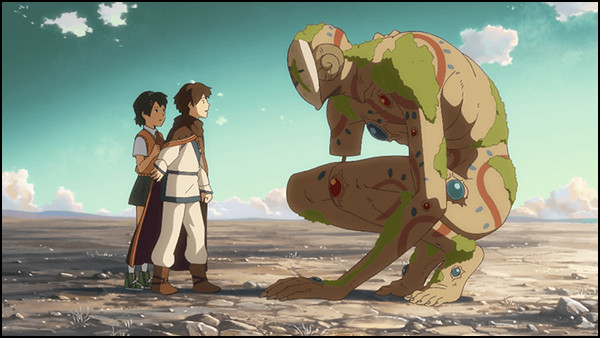
53. Children Who Chase Lost Voices
Makoto Shinkai has spent much of his career aggressively pursuing his personal visions and putting them to film. His first two projects - a short film, and a short feature - were created mostly by himself on a single computer, and even his later feature films often boast a lean staff, with most of the creative work left to him. So, it's weird to see Children Who Chase Lost Voices, a movie where he puts aside his burning desire to tell an intense, personal story, and instead churns out something that feels like he carefully studied an old set of Studio Ghibli classroom notes and used them as an instruction manual to snap together a movie like a model kit. The film's main character Asuna has lost her father, her teacher Mr Morisaki has lost his wife, and they go off together in search of a way to overcome their grief. A strange boy leads them to a mysterious subterranean land called Agartha—a land that holds clues that seem to hint at a way to bring people back from death. Ah! There's that Shinkai magic. It's a credit to his talent that this movie is still as good as it is – Children Who Chase Lost Voices is a satisfying, swashbuckling adventure story bursting with unlikely magic and adventures in the hollow earth, and it still touches on some of his signature themes like longing and grief. The movie ultimately creaks a bit, stuck between his ever-present need to tell an emotionally effective story and his obvious desire to create an accessible blockbuster adventure. This is a good movie, just not one of Shinkai's very finest.
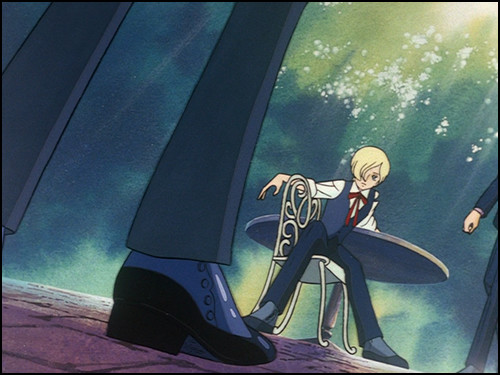
Remember last time, when I said that Time Stranger wasn't Mori Masaki's finest film? Well, this is Mori Masaki's finest film, and a notable early example of anime with shonen ai elements. It's based on manga by Keiko Takemiya, and retains the famed “Fabulous 49er” manga artist's signature style by employing the talented Kazuo Tomizawa as character designer. The movie is a stately, dreamlike look into the life of a boy named Marion, one on the cusp of maturity who keeps others at arms' length in service to what he thinks of as his superior, rational mind. In other words, he's kind of a little asshole, and he even has his own little asshole club. A torrid and wholly socially unacceptable affair with an older woman reveals to Marion that he really can't keep his feelings and passions in check, and this has a seismic effect on both his friendships and his view of the world. This is a great, striking coming-of-age story; Madhouse's debut theatrical feature Unico was a brilliant showpiece, and this film (which was co- directed by Unico director and Madhouse lifer Toshio Hirata) reinforces the notion that this little studio would become a big player in the anime scene of the 80s.
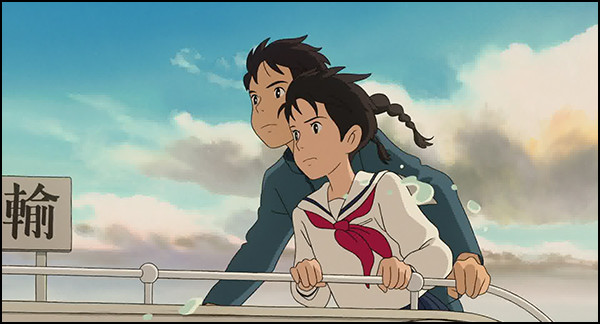
This is one of those nostalgic stories, one where the protagonist grows up in a small town and, with the onset of adulthood looming, suddenly takes steps into a larger world. In this case, though, there are two protagonists: Umi, a thoughtful girl who helps run her family's boarding house, and Shun, a tough kid whose family works down by the harbor. At first, From Up On Poppy Hill feels like a meet-cute, a love story where a pair of strong but combative characters grudgingly put aside their differences to become a great couple. But circumstances take romance off the table, and Poppy Hill adroitly transforms into a story about growing up and becoming a better, more mindful person, one about winning that first hard-fought personal victory that really brings your whole life into focus. But the best character in the film isn't Shun or Umi, it's actually Yokohama Bay itself. Director Goro Miyazaki has remarked that part of the reason they pushed the story's chronology back a bit (the movie's based on a manga) was to make for a more intimate, less modern harbor town. It's surprisingly effective. Along with being a very good, enjoyable movie, From Up On Poppy Hill is also a stinging repudiation against the many (myself included) who doubted Goro Miyazaki's fitness as a director after the tepid mess of Tales from Earthsea. Here, he rises to the task admirably.
I'll be back next time with another set of brilliant and often overlooked anime films. Keep watching until then!
discuss this in the forum (42 posts) |
this article has been modified since it was originally posted; see change history